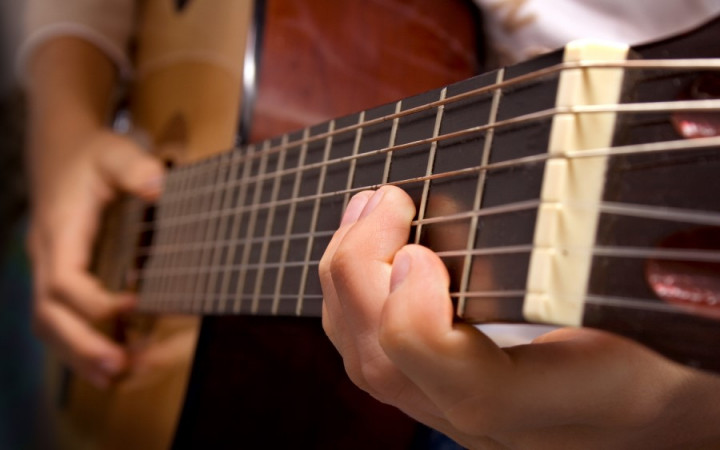Today’s Wonder of the Day was inspired by Dakari. Dakari Wonders, “would a guitar make a different sound if there is more strings” Thanks for WONDERing with us, Dakari!
What do Jimi Hendrix, Eric Clapton, and Eddie Van Halen all have in common? They’re all axemen. Some might call them samurais of the six-string. What are we talking about? They’re all fantastic guitar players, of course!
Guitars play key roles in many different types of music, from country and blues to jazz and rock. Their six strings can steal the show with a power chord progression, a classical run of notes, or a searing guitar solo. Yes, many people love the music that can be coaxed out of a guitar.
Have you ever played along on air guitar when no one was watching? How about using a guitar-shaped controller to play a favorite song in a video game? Pretending to play famous tunes can be a lot of fun! If you’ve ever tried to play a real guitar, though, you know it’s not the easiest thing in the world to do. It takes skill and lots and lots of practice to master the art of putting your fingers in the right places while strumming the strings to produce those magical sounds.
Speaking of strings, did you know that not all guitars have six strings? It’s true! The earliest guitars didn’t start out with six strings. Today, there are actually a wide variety of guitars in existence. Many of them have either fewer or more than six strings.
Stringed instruments have been around for thousands of years. Historians believe the guitar may have originated in Spain in the 1500s. The first guitars probably had four strings. As more and more people began to make and play the instrument, a fifth string was added so players could play more notes.
Eventually, a sixth string was added in the 1700s. This expanded the range of the guitar even further. That’s the popular version of the guitar we know and love today. It hasn’t stopped musicians from experimenting, though. Today, there are all sorts of guitars used around the world.
For example, the bass guitar usually only has four strings. They match the notes of the lowest four strings of a regular guitar, but they’re an octave lower in pitch. Specialty bass guitars can be found, though, that have five or six strings.
Some guitars have twice the number of strings as usual. Aptly named twelve-string guitars, they have a second set of thinner strings that match the standard strings. The dual strings create pairs. They create a brighter tone than a standard guitar.
There are even guitars that have three times the number of strings as usual. For example, a double-necked guitar can have a standard six-string neck on the top with an additional neck below that has twelve strings. Can you imagine trying to play that guitar?
Do you know how to play any of these guitars? If not, have you ever dreamed of learning? The guitar is one of the most popular instruments out there. If you start practicing now, maybe you’ll one day become a famous musician yourself!
Standards: CCRA.L.3, CCRA.L.6, CCRA.R.1, CCRA.R.2, CCRA.R.4, CCRA.R.10, CCRA.SL.1




